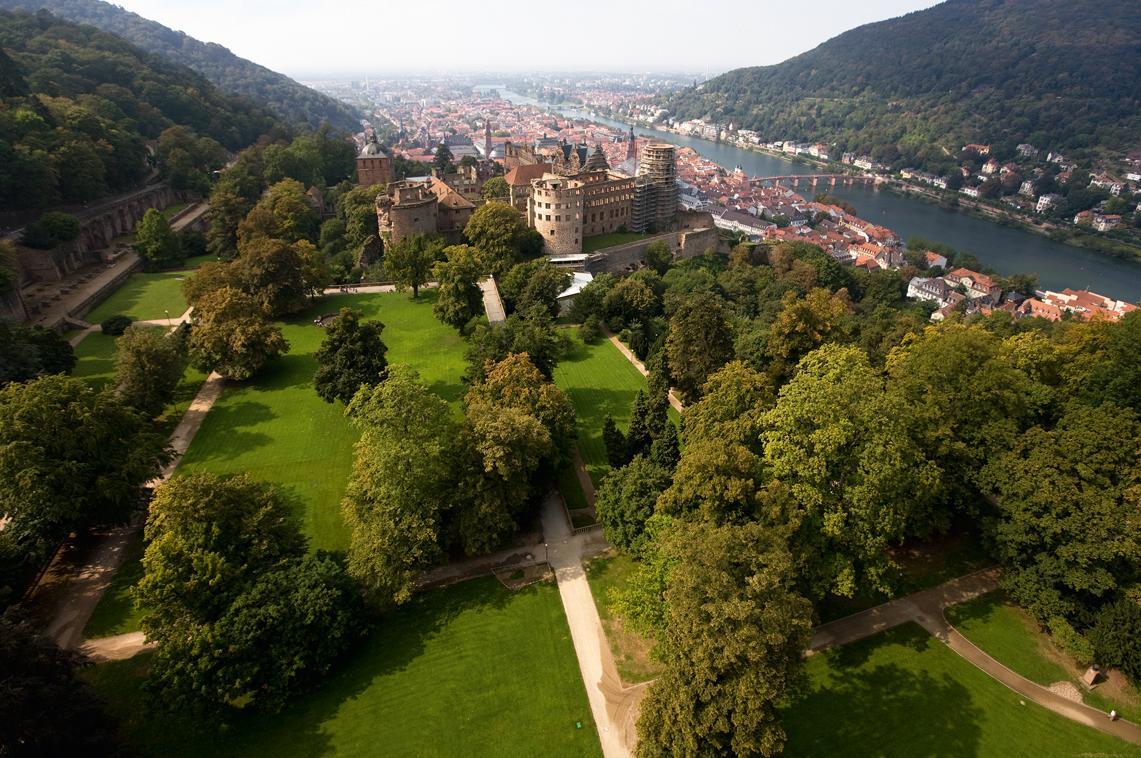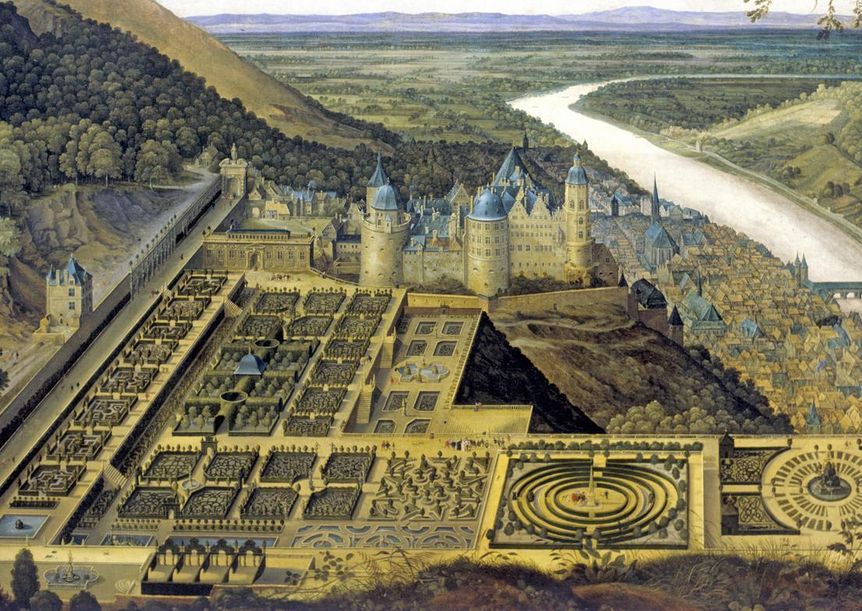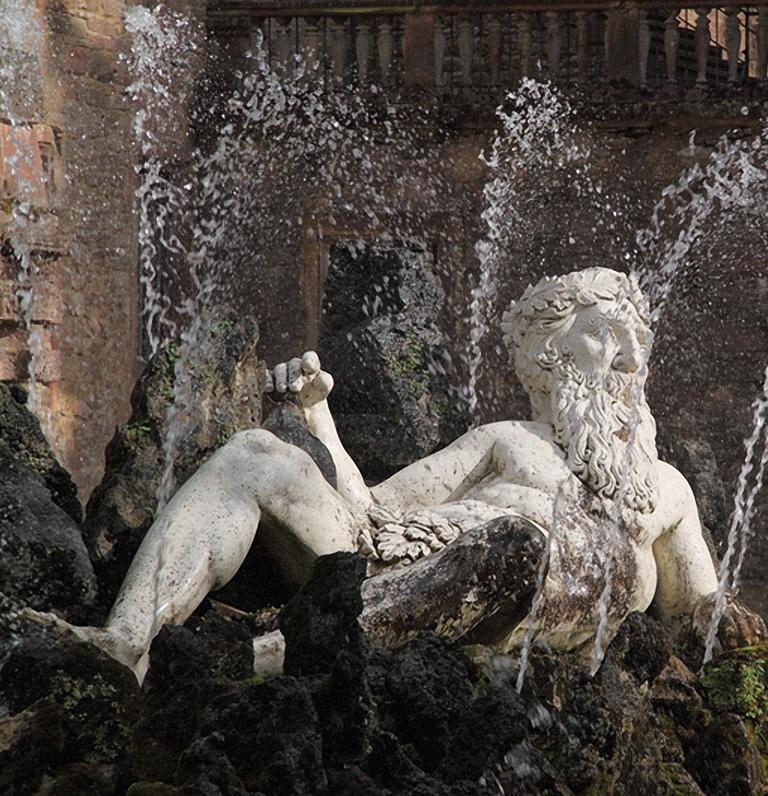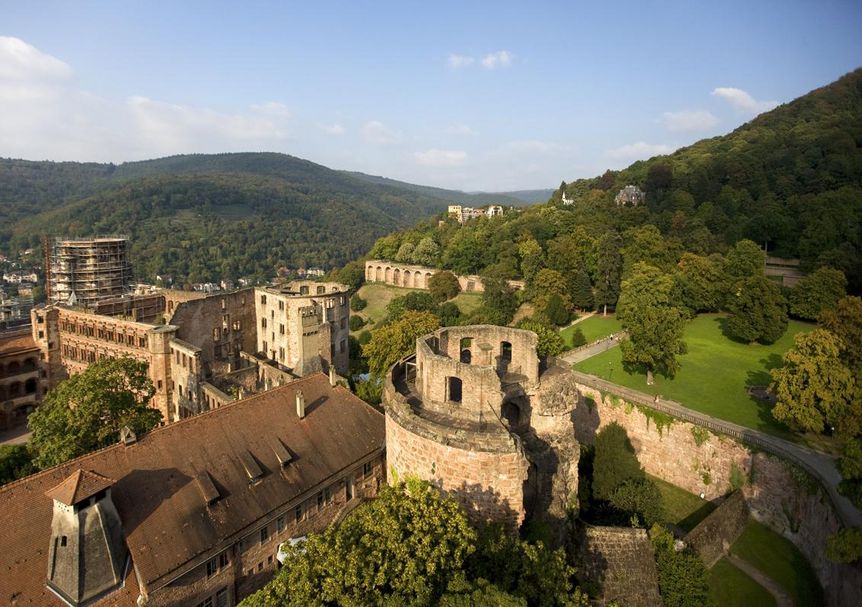Representation and the pleasure of a private garden
The Hortus Palatinus was planned as an artistic synthesis. Grottoes, ornate beds, intimate garden alcoves, and "magical machines" were planned across staggered terraces, for the pleasure of courtly society. Contemporaries praised the representative garden complex as the "eighth wonder of the world." However, today, it is uncertain how many of the plans were implemented. In the western area of the palace grounds, old fortifications gave way to the garden. The Artillery Garden was built here as a walled-in, private pleasure garden for Electress Elizabeth.






